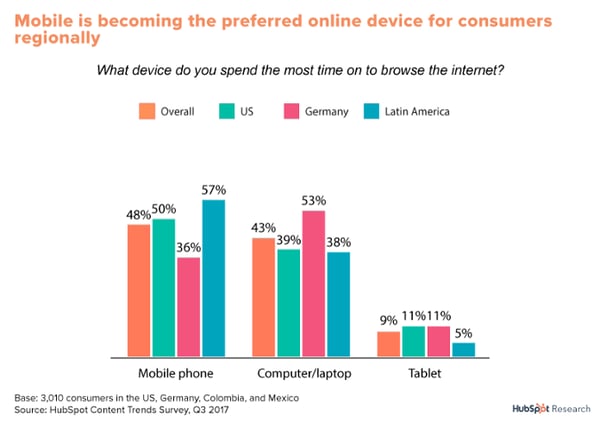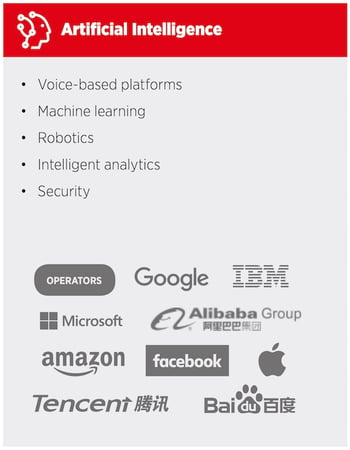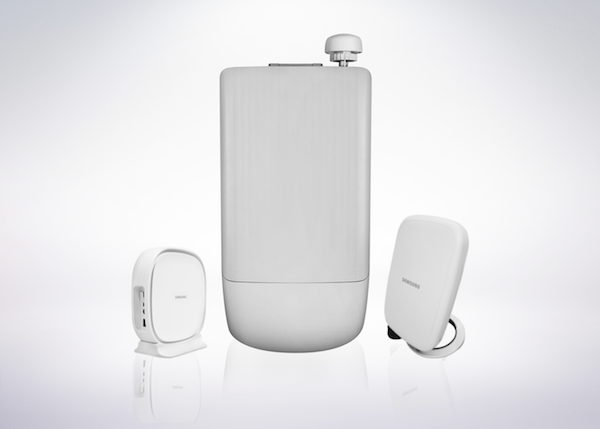Mobile World Congress (MWC) 2018 is underway in Barcelona, with major announcements emerging from the likes of Samsung, Huawei, and more.
And while the former's latest generation of smartphone, the S9 -- which is really being positioned less as a phone, and more as a camera -- stole most of the spotlight yesterday, Samsung and its counterparts all seem to be vying for the starring role in a certain emerging technology.
That former technology, it seems, is 5G: the latest generation in wireless connectivity.
Throughout the MWC's short span thus far, there have been numerous announcements and claims made about 5G. Samsung unveiled "the world’s first 5G FAW [fixed wireless access] commercial solutions" for smart homes, cities, and transportation.
Rajeev Suri, Nokia's CEO, announced partnerships with carriers like Vodafone to deploy 5G in certain regions. Intel previewed 5G commercial deployments for the 2020 Olympic Games. Ericsson pointed to potential new 5G-powered revenue streams. And to cap it off, GSMA -- the organization behind MWC -- noted in its annual Mobile Economy Report that by 2025, 5G networks will account for 14% of global connections (for context, 4G accounted for 23% in 2017).
So what, in the name of all things mobile, is all the 5G fuss about? And why should it matter to us?
What Is 5G?
5G is the soon-to-be latest generation of wireless technology. The "G" stands for generation, in that this is the fifth generation of this type of connectivity. Currently, the latest generation available is 4G: the technology that powers cellular connectivity like LTE. The goal of 5G is to support the rising number of internet users on mobile, by providing better speed, accommodating more data, greater responsiveness, and connectivity to smart devices.
How 5G Will Impact SEO
As with most evolving technologies, one major reason for progressive generations of wireless connectivity is to meet growing demand and users.
According to Pew Research Center, more than one of every 10 U.S. adults use the internet via mobile only -- that is, they own a smartphone, but don't have or use a home high-speed internet connection. And HubSpot's own research shows that for 50% of consumers in the U.S., mobile is their preferred online device.

That growing demand is two-fold. First, there are more users for networks and providers to support, since more data is being exchanged, downloaded, and consumed. Then, there's the competitive aspect: As more users turn to mobile, it's an opportunity for brands to say, "But wait -- here's what else you can do, right from your palm."
That's how we've evolved into multiple generations of connectivity. People don't just demand mobile online access anymore. They don't just want to check their email. They want to be able to do those things, browse, use apps, message their friends, watch a movie, make dinner reservations, and more. And, they want to be able to do those things quickly.
At the foundation of all of those mobile capabilities is the ability to seek and discover information or content. That means it also changes the way that we search for it.
We've written quite a bit about the general shift toward voice search and activation. Take my experience with three different smart home speakers, for instance, and how I used voice commands to get different information or experiences from each one. These smart speaker capabilities are rooted in voice search tools like Apple's Siri and Google Assistant -- the fact that they are now being built into branded, assistive ecosystem is just one indication of changes in the way we search.

Source: GSMA, "Key areas of innovation – major players and use cases" for 5G
All of these developments point to a growing reliance on wireless technology, and the improvements made to it in response. "Ultimately, the faster mobile internet speeds become, the more advanced web experiences become," says Matt Barby, HubSpot's Director of Acquisition. "Creating richer and more load-intensive experiences on mobile -- without the additional load time -- is what will dramatically increase the usage of mobile devices."
And that increased usage, Barby explains, also means "an increase in usage means an increase in mobile searches. An increase in mobile searches means more focus from Google to tailor the entire search ecosystem towards mobile searching patterns. This will also increase voice searches."
Incorporating mobile into ranking factors isn't exactly new territory for Google. That began in 2015, when the search engine updated its algorithm to favor mobile-friendly sites for searches performed on such devices. That continued to evolve last year, when it penalized sites with interstitials that would interfere with the mobile browsing experience.
Barby says that users should only continue to expect these types of updates. "Google has already started shifting to a 'mobile-first' search index this year," he says. "So don't be surprised if we see more and more web experiences being developed to cater for mobile-specific user experience patterns."
How We Connect to Things and Interact With Them (and Each Other)
There's another element to aforementioned smart home speakers. Not only are their origins rooted in voice search and assistant capabilities, but users can also control them remotely from their mobile devices.
And the connectivity of our devices -- these "smart things," as they've come to be known -- has largely influenced this fifth generation of wireless connectivity.
Last fall, at the Samsung Developer Conference, the internet of things (IoT) permeated many of the conversations and sessions taking place. Soon, it would be possible to turn any appliance or electronic device in one's home, from lamps to washing machines, into a smart, connected device that could be controlled not only remotely from one's mobile device, but also with the help of Bixby, Samsung's digital voice assistant.
And again, at CES in January, IoT was frequently the topic du jour, with more than one brand exhibiting its own ecosystem of smart, connected things. We were looking at a future, it seems, where everything was online and could be controlled remotely via mobile. But that requires a high level of communication both between the devices themselves and the mobile platform being used to control it. That involves the exchange of a massive amount of data, which requires particularly strong and fast connectivity.
Enter -- you guessed it -- Bixby.
"If you thought the world was already connected, sit tight," says Conor Cirillo, HubSpot's conversational marketing manager. "5G will improve the way we interact with our devices. But more important, it will be a massive leap in how machines communicate with each other."

Samsung 5G FWA commercial solutions
Cirillo, who specializes in the evolution of digital communication like messaging and bots, also points to the way 5G will change the way the human users of 5G connect -- and is personally following the technology that will make it easier for people to interact with each other and brands through wireless devices.
"There are big implications here," he says, "of more people being able to talk to more people, on more devices, to do more things."
That interaction with brands is a key element of many IoT ecosystems. A growing number of consumers are already turning to messaging -- onsite or via third-party apps like Messenger -- to connect with businesses for things like customer service. And at CES, for example, some brands suggested that such capabilities will be built into appliances themselves, some of which can detect mechanical issues and remotely repairing them before the user even knows about them.
While we haven't seen too much in the way of customers directly communicating with brands through their appliances for service needs, there are many signs that we're heading in that direction -- potentially eliminating the need for messaging apps and introducing a new platform for this type of communication, whether with a human representative or an AI-powered bot.
But such communication still requires a powerful network to support it. And as 5G permeates the mainstream -- the first commercial networks are expected to launch in 2018 -- our reliance on this generation of connectivity is likely to grow.
"Everything We Have Now, but More"
When I asked my colleague, HubSpot Marketing Fellow Sam Mallikarjunan for his take on 5G, he pointed to three key elements he expects to see from it:
"Less reliance on apps. More reliance on smooth native web experiences. More flexibility for rich media."
Remember what I said about the possible elimination of third-party platforms like Messenger to communicate with brands? From Mallikarjunan's perspective, that's only one piece of a decreased need for such apps that could come from the introduction and growth of 5G connectivity.

Source: GSMA, "Key areas of innovation – major players and use cases" for 5G
It makes sense. While this type of network will help us do things that require more data and quicker speeds from our smartphones, it will also help to build the ability to do similar things directly from an appliance itself that are currently controlled by a mobile device. Here's where something like the Google Home is a good example. While I can control it remotely from my phone, for most purposes, I don't have to. I can just tell it what to do.
The exception is if I need help using it. Right now, I have to turn elsewhere to troubleshoot, usually through the app on my phone or through Google's online support pages. But soon, it seems, I'll be able to ask the smart speaker for help with whatever I'm having trouble getting it to do, whether I'm speaking to a human representative or Google Assistant's AI.
It's an elaboration of how Mallikarjunan summarized what 5G will bring.
"Everything we have now," he predicts, "but more."
from Marketing https://blog.hubspot.com/marketing/mobile-world-congress-5g
No comments:
Post a Comment